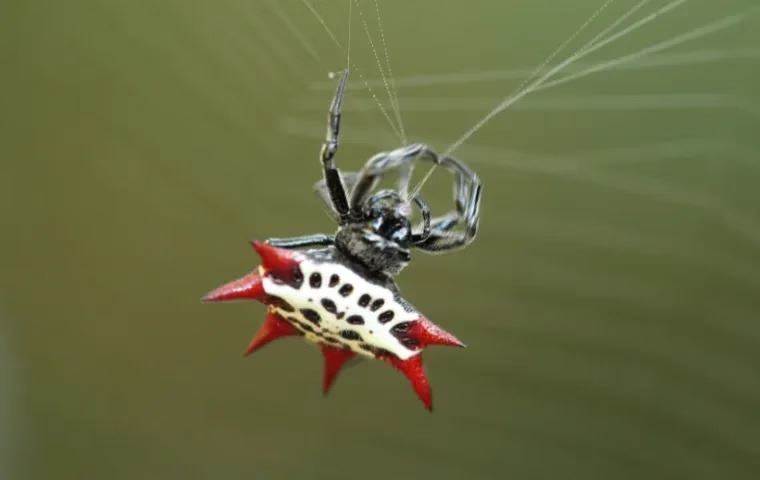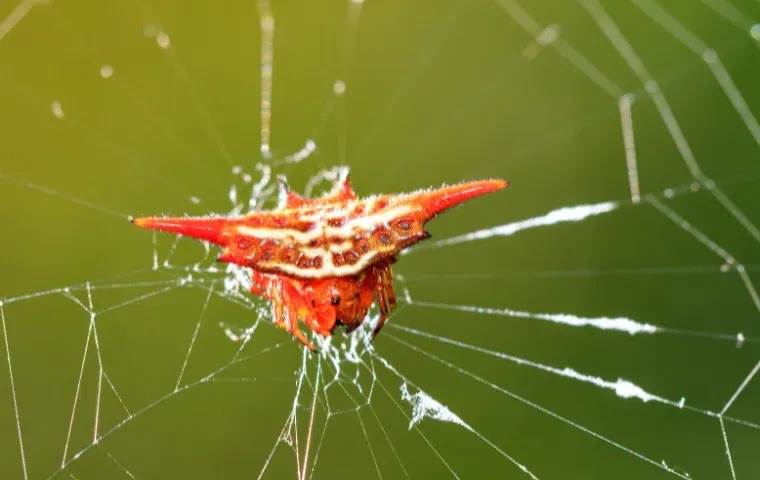How to Get Rid of Crab Spiders in West Palm Beach, Florida

Crab spiders are a common sight in Miami, FL, and many homeowners seek ways to manage their presence.
While they are generally harmless and can even be beneficial, some residents may not appreciate their presence and look for safe and effective ways to discourage or remove them.
Getting rid of crab spiders involves a mix of DIY methods, understanding their behavior, and recognizing when it might be time to call a pest control professional.
Key Takeaways
- Identification and understanding of crab spider habits are crucial in effective pest management.
- A combination of do-it-yourself tactics and professional intervention can address crab spider issues.
- While crab spiders contribute to ecological balance, their control in domestic settings is sometimes necessary.
What Are DIY Methods to Get Rid of Spiders in Florida?
Before asking for a free quote from professional exterminators, you can opt for simple yet effective DIY pest control methods to keep crab spiders at bay from your home and garden.
These DIY spider control methods offer natural and safe solutions for managing these eight-legged visitors without resorting to harsh chemicals.
Regular Cleaning
One effective way to tackle spider infestations is by maintaining a clean environment. They often frequent cluttered or dusty areas, so frequent dusting and decluttering can make the area less hospitable for spiders.
- Vacuum: Use a vacuum cleaner with hose attachments to remove spiders, webs, and egg sacs from hard-to-reach areas like closets.
- Declutter: Reduce clutter where spiders might hide, such as stacks of papers, boxes, or clothing.
Natural Deterrents
They can be repelled by certain natural substances which are non-toxic and readily available.
- Essential Oils: Mix water with a few drops of peppermint, tea tree, or lavender oil and spray it around.
- Vinegar Spray: A mix of equal parts white vinegar and water can act as a repellent when sprayed in areas spiders frequent.
Habitat Modification
They prefer quiet, undisturbed areas. Altering the outside area of your home can make it less inviting for spiders.
- Trim Vegetation: Keep shrubs and plants trimmed back from your home to eliminate hiding spots.
- Remove Webs: Regularly check for and remove any spider webs from around the home.
Exclusion Techniques
Preventing spiders from entering the home is key.
- Seal Cracks: Inspect and seal any cracks or crevices around windows, doors, and the foundation.
- Install Screens: Ensure window and door screens are in good repair to prevent entry.
How to Identify Crab Spiders in Florida
In Miami, locals encounter various types of spiders aside from other household pests like cockroaches, bed bugs, and termites.
Gasteracantha, commonly known as crab spiders or spiny orb-weavers, is one of the spider species you may face.
This species of spider is easily recognizable by their unique hard, spiny shells and vibrant colors.
Physical Characteristics

Gasteracantha spiders, part of the Araneidae family, are known for their distinctive orb-shaped bodies with prominent spiny projections and legs that are not so long.
Below is a list of key physical features that set orb-weaver spiders apart.
Features | Description |
Color Change | Unable to change color. |
Coloration | Brightly colored with patterns of spots or stripes. |
Common Colors | Includes white, yellow, orange, and red. |
Size | Relatively small, about 0.5 inches. |
Abdomen | Hard, shell-like |
Spines | Six distinctive spines protrude from the sides of the abdomen. |
Where Do Crab Spiders Live?
Orb-weavers are common spiders in South Florida that showcase distinct behaviors and habitat preferences, primarily known for their impressive orb webs.
They prefer sunny areas with high insect traffic, such as:
- Between trees and shrubs
- Along the edges of forested areas
- In gardens and near outdoor lighting
Their webs are often found at eye level or higher, featuring a distinct, sturdy spiral design that can catch a variety of flying insects.
Feeding and Prey
Gasteracantha spiders are not ambush predators but rely on their webs to trap flying insects such as flies, bees, and moths, which play a significant role in the ecosystem. Their diet mainly consists of:
- Small flying insects attracted to their web
- Occasionally, larger insects, depending on the web's strength and the spider's size
How to Distinguish Crab Spiders from Other Spiders in Florida
Florida is home to a variety of arachnids that you might mistake for crab spiders. Here are some common ones to get you started.
Spider Species | Description |
Southern Black Widow Spider | Highly venomous, identified by a distinctive red hourglass on the abdomen |
Brown Recluse Spiders | Known for their reclusive behavior and a violin-shaped mark on the back, they have a potent venom that can cause significant health issues. |
Wolf Spiders | Larger, ground-dwelling spiders that hunt prey actively at night. |
House Spider | Commonly found indoors and in garages, these spiders create cobwebs in attics, corners, and under furniture. |
Jumping Spiders | Small, agile spiders with excellent vision and jump to catch their prey. |
Banana Spider | Known for their large size and brightly colored bodies, as well as for spinning large, intricate webs. |
Brown Widow | A less venomous cousin of the black widow, identifiable by an orange hourglass mark. |
Do Crab Spiders Bite?
Although only harmful to their prey, crab spiders are venomous spiders. Their bites are rare, but they can happen, especially if these spiders feel threatened.
Signs and Symptoms
- Skin Reaction: Typically, a person bitten by a crab spider may experience redness, swelling, and pain at the bite site. It's often mild and akin to a bee sting.
- Systemic Symptoms: Although uncommon, some individuals might exhibit systemic symptoms like nausea, allergic reactions, or dizziness.
Treatment
- Clean the Area: First, wash the bite site with soap and water to reduce the risk of infection.
- Cold Compress: Apply a cold compress to the affected area to alleviate swelling and pain.
- Over-the-counter Medication: For pain relief, they can take acetaminophen or ibuprofen as directed.
- Medical Attention: They should seek medical help if symptoms progress or if they experience an allergic reaction.
When to Call a Professional
Should you tackle crab spiders on your dime and time? It's tempting to go DIY, but sometimes a phone call to the professional exterminators for a free inspection is the wisest move.
Wondering when to reach out? Look for these signs:
- Infestation Size: A single spider can usually be handled solo. Spotting multitudes? Time to bring in the cavalry.
- Location, Location, Location: Spiders chilling in hard-to-reach zones? Professionals have the tools to evict them safely.
- Recurring Sightings: Regular eight-legged guests after your best efforts? Pros have the strategies to cut the cycle.
- Sensitive Occupants: Infants, older people, or folks with allergies at home? A pro ensures safe removal with minimal risk.
When spiders spin their webs too close to comfort, a trusted professional pest control company can clear the clutter, leaving you with peace of mind and a spider-free home.
Consider the safety and sanity of your household – if the spider problem seems bigger than a shoe and a tissue, don't tread alone.
